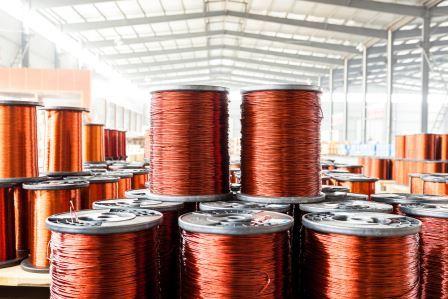Copper and aluminium, the most used industrial metals gained substantially in the past few weeks. The rally was associated with supply uncertainties and a notable increase in global demand. Western ban on Russian metals, hopes of US rate cuts, and diversification of holdings of central banks also uplifted the sentiments.
Copper futures are hovering near lifetime highs in the key China markets, while it is traded at two-year highs on futures platforms like LME and MCX. Aluminium prices are currently placed at record levels in Indian markets, gaining over 20 percent since the start of the year.
A resurgence of manufacturing activity in the world’s largest economies like the US and China attributed to a surge in demand for industrial metals.
The US manufacturing activity witnessed the first expansion in March after a contraction of 16 months. Manufacturing numbers in the country surprisingly jumped to 50.3 against the expectation of 48.4 in the latest month.
China’s manufacturing PMI data also showed a positive trend. The PMI numbers in the country rose to 51.1 in March, which was the fifth straight month of growth in the country.
A turnaround in manufacturing activity in the world’s leading commodity consumers indicates a revival in demand for industrial commodities, especially copper and aluminium, which are the most widely used base metals worldwide.
In addition, there are concerns over supply bottleneck. Recently, the US and UK implemented new sanctions on Russian metals including copper, aluminium, and nickel. This was aimed at curbing Russia’s revenue from metal exports supporting its military operations in Ukraine.
After the new sanctions on Russian metals, the London Metal Exchange and the Chicago Mercantile Exchange announced that they would no longer trade new aluminium, copper, and nickel produced by Russia. This created concerns over supply adding additional pressure to global commodity markets.
However, global production of copper and aluminium has seen steady growth in the past many years.
A notable increase in output from China, the leading commodity player was also seen in March. The resumption of production post-Chinese New Year holidays and smelters returning to normal operations contributed to this uptick.
The escalating hostilities in the Middle East could also stoke volatility in metal prices. The recent Israeli attack on Iranian soil heightened concerns over critical maritime routes in West Asia, contributing to an increase in prices of industrial commodities.
Hopes of US interest rate cut is another reason for higher commodity prices. Reduced rates can stimulate borrowing and spending by both consumers and businesses which may boost industrial growth and thus its prices.
Asset diversification of various central banks assists the commodity prices as well. In the past couple of years, central banks across the globe increased their diversification of assets to commodities, resulting in a spike in demand.
Looking ahead, as prices are hovering near multi-year highs, there are chances of a technical correction, but such moves are unlikely to set into major liquidation. Since the supply-demand dynamics are supportive of prices, the ongoing positive sentiment will remain intact for the short run. However, any signs of supplies exceeding demand would call for major liquidation pressure later.
First published in Economic Times








